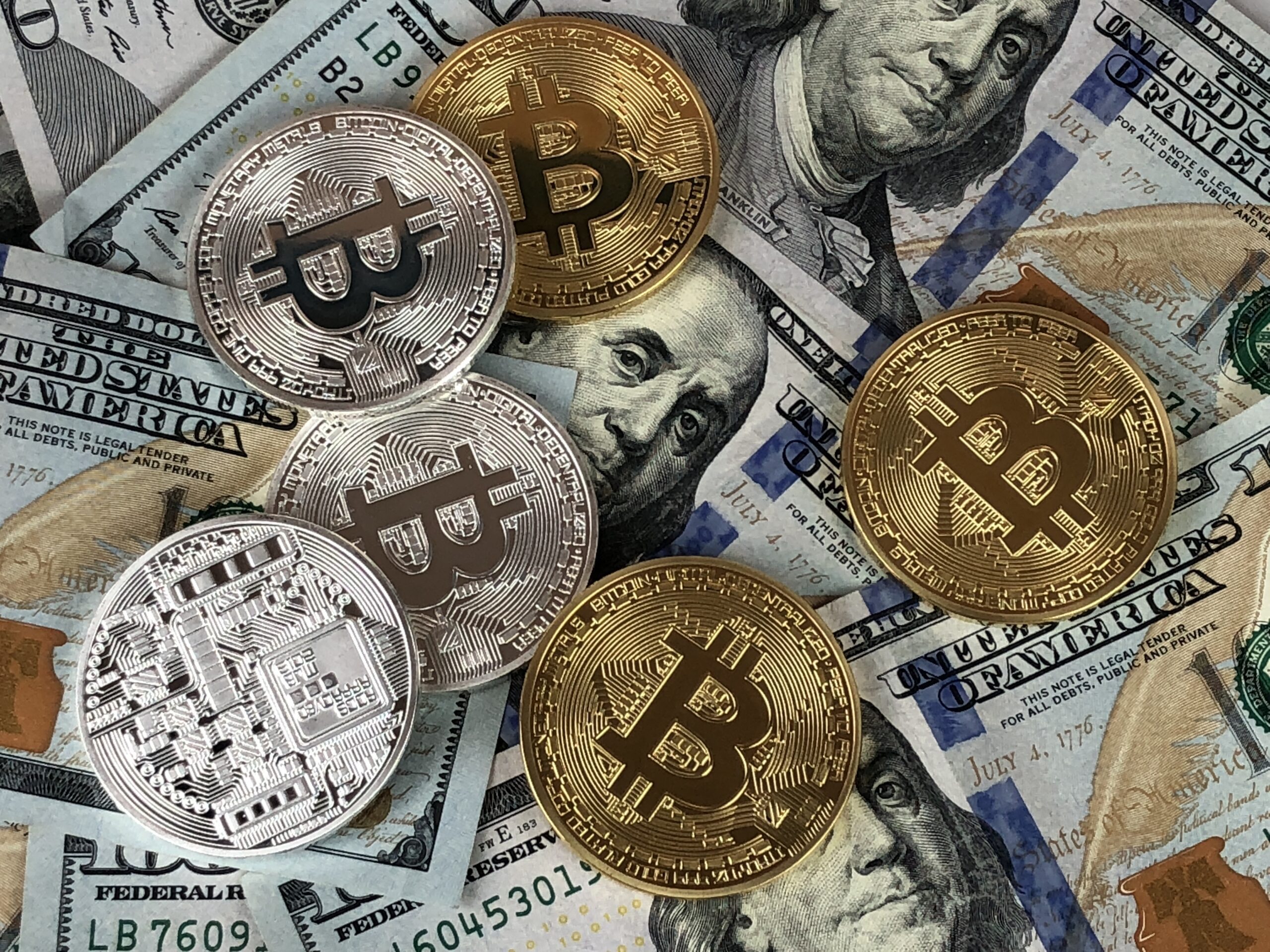Sure, you’ve heard about cryptocurrencies and how they have been revolutionizing the financial world. But have you ever wondered what exactly a cryptocurrency wallet is? A cryptocurrency wallet is essentially a digital wallet that allows you to securely store, send, and receive digital currencies. Just like a physical wallet holds your cash, cards, and IDs, a cryptocurrency wallet holds your digital assets. But how does it work, and how can you keep your digital currencies safe? Let’s explore the concept of a cryptocurrency wallet together.

What is a Cryptocurrency Wallet?
Definition
A cryptocurrency wallet is a digital wallet that is used to store, manage, and transact with cryptocurrencies. It is a software application that allows you to securely store your private keys, which are needed to access and transfer your cryptocurrencies. Think of it as a virtual wallet that holds your digital assets.
Functionality
The main functionality of a cryptocurrency wallet is to provide a secure and convenient way to manage your cryptocurrencies. It allows you to send and receive different types of cryptocurrencies, check your balances, view transaction history, and even exchange or trade cryptocurrencies. In essence, a cryptocurrency wallet acts as a bridge between you and the blockchain, enabling you to interact with your digital assets.
Types of Cryptocurrency Wallets
Hot Wallets
Hot wallets are cryptocurrency wallets that are connected to the internet. They are generally easy to set up and use, making them a popular choice for everyday users. With a hot wallet, you can access your cryptocurrencies anytime, anywhere, as long as you have an internet connection. However, because hot wallets are connected to the internet, they are more susceptible to cyber attacks and theft.
Cold Wallets
Cold wallets, on the other hand, are offline wallets that store your private keys on a device that is not connected to the internet. This makes them highly secure, as they are not vulnerable to online threats. Cold wallets are often used for long-term storage of large amounts of cryptocurrencies that you don’t need to access frequently. They offer an extra layer of protection for your digital assets.
Desktop Wallets
Desktop wallets are software applications that you install on your computer. They provide a secure storage of your private keys and allow you to manage your cryptocurrencies directly from your desktop. Desktop wallets are considered to be more secure than online wallets, as your private keys are stored locally on your computer. However, if your computer gets infected with malware or if you lose access to it, you may lose your cryptocurrencies.
Mobile Wallets
Mobile wallets are apps that you can download and install on your smartphone or tablet. They offer the convenience of being able to manage your cryptocurrencies on the go. Mobile wallets are designed to be user-friendly and often have additional features such as QR code scanning for easy transactions. However, since smartphones can be easily lost or stolen, it is important to take additional security measures to protect your wallet.
Online Wallets
Online wallets, also known as web wallets, are cryptocurrency wallets that are accessed through a web browser. They are hosted by third-party providers, which means that your private keys are stored on their servers. Online wallets are easy to set up and use, but they are considered to be less secure than other types of wallets. If the wallet provider’s servers are compromised, your cryptocurrencies could be at risk.
Hardware Wallets
Hardware wallets are physical devices designed specifically for storing cryptocurrencies. They are often shaped like USB drives and come with their own built-in security features. Hardware wallets keep your private keys offline and require you to physically connect the device to your computer or smartphone to access your cryptocurrencies. This makes them extremely secure, as they are not susceptible to online attacks.
Paper Wallets
Paper wallets are a form of cold storage where you print out your private and public keys on a piece of paper. The keys are usually printed in the form of QR codes, which can be easily scanned to initiate transactions. Paper wallets are considered to be one of the most secure ways of storing cryptocurrencies, as they are completely offline. However, you must take extra precautions to securely store and protect your paper wallet from physical damage or loss.
How Does a Cryptocurrency Wallet Work?
Key Generation and Storage
When you create a cryptocurrency wallet, it generates a pair of cryptographic keys: a private key and a public key. The private key is like a password that is used to access your cryptocurrencies, while the public key is used to receive funds. The private key is stored securely in your wallet, while the public key is widely shared with others.
Address Generation and Management
To receive funds, you need to generate a unique cryptocurrency address using your public key. The address is a long string of alphanumeric characters that serves as a destination for the funds. Your wallet keeps track of all the addresses associated with your account and manages the incoming and outgoing transactions.
Transactions and Balances
When you want to send cryptocurrencies to someone else, you initiate a transaction from your wallet. The wallet digitally signs the transaction with your private key, verifying that you are the rightful owner of the funds. The transaction is then broadcasted to the network and included in a block in the blockchain. Your wallet also keeps track of your balances by continuously updating the transaction history and verifying the validity of incoming transactions.
Security Measures and Considerations
Private and Public Keys
The security of your cryptocurrency wallet relies heavily on the protection of your private keys. You should never share your private key with anyone and should keep it stored securely. It is also important to regularly backup your private keys in case of loss or damage.
Multisig Wallets
Multisig wallets add an extra layer of security by requiring multiple signatures to authorize transactions. This means that multiple private keys are needed to access and transfer the funds, reducing the risk of unauthorized transactions.
Backup and Recovery
Backing up your wallet is crucial in case your device gets lost, stolen, or damaged. Most wallets provide an option to backup your private keys or seed phrase, which is a series of words that can be used to recover your wallet. It is recommended to store your backup in a secure location, such as a safe deposit box or a fireproof safe.
Phishing and Malware Prevention
Phishing and malware attacks are common in the cryptocurrency world. It is important to be cautious of phishing emails or websites that try to trick you into revealing your private keys or login credentials. Using up-to-date antivirus software and enabling two-factor authentication can help prevent malware attacks on your wallet.

Popular Cryptocurrency Wallets
Coinbase Wallet
Coinbase is one of the most popular cryptocurrency exchanges and also offers a wallet service. It is known for its user-friendly interface, strong security features, and support for a wide range of cryptocurrencies. Coinbase wallet also provides a decentralized finance feature, allowing users to interact with decentralized applications directly from their wallets.
Trezor Wallet
Trezor is a hardware wallet that offers top-level security for your cryptocurrencies. It stores your private keys offline and requires physical confirmation for transactions. Trezor wallet supports a wide range of cryptocurrencies and provides an easy-to-use interface for managing your digital assets.
Ledger Nano S
Ledger Nano S is another popular hardware wallet that is widely trusted for its security features. It uses a secure chip to store your private keys and offers a simple interface for managing and transacting with your cryptocurrencies. Ledger Nano S supports a variety of cryptocurrencies and has a reputation for being one of the most secure wallets on the market.
MetaMask Wallet
MetaMask is a popular browser extension wallet that allows you to interact with decentralized applications directly from your web browser. It is easy to set up and use, and supports a wide range of cryptocurrencies. MetaMask also provides enhanced privacy features, such as the ability to create multiple accounts and manage your data permissions.
Exodus Wallet
Exodus is a software wallet that offers a beautiful and intuitive interface for managing your cryptocurrencies. It supports a wide range of cryptocurrencies and provides built-in exchange features, allowing you to easily swap between different cryptocurrencies within the wallet. Exodus wallet also offers a portfolio tracking feature, allowing you to keep track of the value of your holdings.
Choosing the Right Cryptocurrency Wallet for You
Consideration Factors
When choosing a cryptocurrency wallet, there are several factors to consider. These include the type of wallet you want (hot, cold, desktop, mobile, etc.), the level of security you require, the compatibility with the cryptocurrencies you own, and the ease of use of the wallet interface.
Compatibility with Cryptocurrencies
Not all wallets support every type of cryptocurrency. It is important to choose a wallet that is compatible with the cryptocurrencies you own or plan to own in the future. Make sure to do your research and check if the wallet supports the specific cryptocurrencies you are interested in.
Ease of Use
The user interface and overall user experience of a wallet are important considerations, especially for beginners. Look for a wallet that has a user-friendly interface and provides clear instructions on how to perform different actions, such as sending and receiving cryptocurrencies.
Security Features
Security should be a top priority when choosing a cryptocurrency wallet. Look for wallets that offer strong security features, such as two-factor authentication, encryption, and multisig support. Hardware wallets are generally considered to be the most secure option, but they may not be suitable for everyone.
Reputation and Reviews
Before choosing a wallet, it is a good idea to research the reputation of the wallet provider and read reviews from other users. Look for wallets that have a good track record of security and customer support. User reviews can also provide valuable insights into the usability and reliability of the wallet.

Setting Up a Cryptocurrency Wallet
Choosing a Wallet Provider
To set up a cryptocurrency wallet, you first need to choose a wallet provider. Consider the factors mentioned earlier, such as the type of wallet you want, the level of security you require, and the compatibility with your cryptocurrencies. Research different wallet providers and compare their features and user reviews to make an informed decision.
Creating an Account
Once you have chosen a wallet provider, you will need to create an account. This typically involves providing your email address and creating a secure password. Some wallet providers may require additional verification steps, such as phone number verification or identity verification, depending on their security measures.
Generating Wallet Addresses
After creating an account, your wallet will generate a unique wallet address for each type of cryptocurrency supported. This address is used to receive funds from others. You can share your wallet address with others to receive payments or deposits. It is important to note that each cryptocurrency has its own unique wallet address.
Securing Your Wallet
Once your wallet is set up, it is essential to take steps to secure it. Enable any additional security features offered by your wallet provider, such as two-factor authentication or biometric authentication. Backup your private keys or seed phrase and store them in a safe place. Regularly update your wallet software to ensure you have the latest security patches. By taking these precautions, you can protect your cryptocurrencies from theft or loss.
Managing and Using a Cryptocurrency Wallet
Receiving and Sending Cryptocurrency
To receive cryptocurrency, you simply provide your wallet address to the sender. They can then initiate a transaction to send funds to your wallet address. To send cryptocurrency, you need to know the recipient’s wallet address. Enter the recipient’s address, specify the amount to send, and confirm the transaction. Your wallet will digitally sign the transaction with your private key and broadcast it to the network.
Checking Balances
Most wallets provide a balance overview that shows the current value of your cryptocurrencies. Some wallets also offer additional features, such as portfolio tracking, where you can see the value of your holdings over time. Checking your balances regularly allows you to stay informed about the value of your investments.
Tracking Transaction History
Your wallet keeps a record of all your transaction history. This allows you to view previous transactions, including the sender, recipient, and amount involved. Being able to track your transaction history is useful for accounting purposes or for investigating any unauthorized or suspicious transactions.
Exchanging and Trading Cryptocurrencies
Some wallets offer built-in exchange features that allow you to easily swap between different cryptocurrencies within the wallet. This can be useful if you want to diversify your portfolio or take advantage of price fluctuations. Make sure to check the exchange rates and fees before making any transactions.
Backup and Recovery of a Cryptocurrency Wallet
Importance of Backup
Backup is crucial in case your wallet becomes inaccessible or your device gets lost, stolen, or damaged. By regularly backing up your private keys or seed phrase, you can ensure that you can recover your wallet and access your cryptocurrencies even in unforeseen circumstances.
Backup Methods
Most wallets provide options for backing up your wallet. This typically involves either writing down your private keys or seed phrase on a piece of paper or storing them in a digital file. It is important to follow the backup instructions provided by your wallet provider and securely store your backup in a safe place.
Recovering a Wallet
If you ever need to recover your wallet, you can use the backup you created. Wallet recovery typically involves entering your private keys or seed phrase into a new wallet or wallet restoration tool. Make sure to follow the instructions provided by your wallet provider to successfully recover your wallet and regain access to your cryptocurrencies.
Conclusion
A cryptocurrency wallet is an essential tool for anyone who wants to hold and transact with cryptocurrencies. It provides a secure and convenient way to manage your digital assets and interact with the blockchain. By understanding the different types of wallets, their functionalities, and the security measures involved, you can choose the right wallet that fits your needs. Remember to always prioritize security and take precautions to protect your private keys. With the right wallet and a good understanding of how it works, you can confidently navigate the world of cryptocurrencies and enjoy the benefits they offer.

